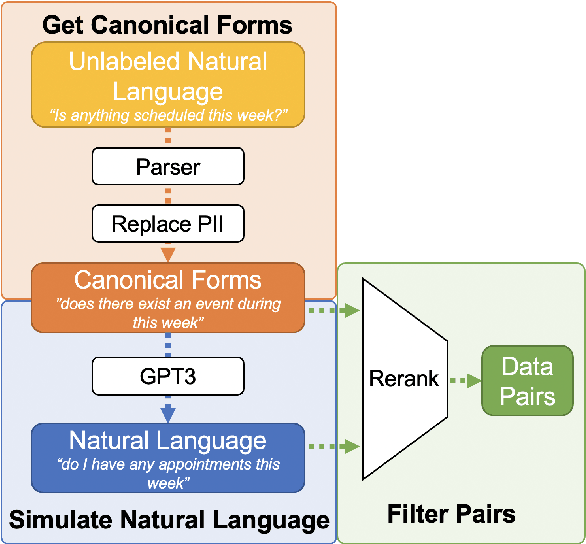Charles Chen
Med42 -- Evaluating Fine-Tuning Strategies for Medical LLMs: Full-Parameter vs. Parameter-Efficient Approaches
Apr 23, 2024



Abstract:This study presents a comprehensive analysis and comparison of two predominant fine-tuning methodologies - full-parameter fine-tuning and parameter-efficient tuning - within the context of medical Large Language Models (LLMs). We developed and refined a series of LLMs, based on the Llama-2 architecture, specifically designed to enhance medical knowledge retrieval, reasoning, and question-answering capabilities. Our experiments systematically evaluate the effectiveness of these tuning strategies across various well-known medical benchmarks. Notably, our medical LLM Med42 showed an accuracy level of 72% on the US Medical Licensing Examination (USMLE) datasets, setting a new standard in performance for openly available medical LLMs. Through this comparative analysis, we aim to identify the most effective and efficient method for fine-tuning LLMs in the medical domain, thereby contributing significantly to the advancement of AI-driven healthcare applications.
Addressing Resource and Privacy Constraints in Semantic Parsing Through Data Augmentation
May 18, 2022



Abstract:We introduce a novel setup for low-resource task-oriented semantic parsing which incorporates several constraints that may arise in real-world scenarios: (1) lack of similar datasets/models from a related domain, (2) inability to sample useful logical forms directly from a grammar, and (3) privacy requirements for unlabeled natural utterances. Our goal is to improve a low-resource semantic parser using utterances collected through user interactions. In this highly challenging but realistic setting, we investigate data augmentation approaches involving generating a set of structured canonical utterances corresponding to logical forms, before simulating corresponding natural language and filtering the resulting pairs. We find that such approaches are effective despite our restrictive setup: in a low-resource setting on the complex SMCalFlow calendaring dataset (Andreas et al., 2020), we observe 33% relative improvement over a non-data-augmented baseline in top-1 match.
Constrained Language Models Yield Few-Shot Semantic Parsers
Apr 18, 2021



Abstract:We explore the use of large pretrained language models as few-shot semantic parsers. The goal in semantic parsing is to generate a structured meaning representation given a natural language input. However, language models are trained to generate natural language. To bridge the gap, we use language models to paraphrase inputs into a controlled sublanguage resembling English that can be automatically mapped to a target meaning representation. With a small amount of data and very little code to convert into English-like representations, we provide a blueprint for rapidly bootstrapping semantic parsers and demonstrate good performance on multiple tasks.
Task-Oriented Dialogue as Dataflow Synthesis
Oct 02, 2020Abstract:We describe an approach to task-oriented dialogue in which dialogue state is represented as a dataflow graph. A dialogue agent maps each user utterance to a program that extends this graph. Programs include metacomputation operators for reference and revision that reuse dataflow fragments from previous turns. Our graph-based state enables the expression and manipulation of complex user intents, and explicit metacomputation makes these intents easier for learned models to predict. We introduce a new dataset, SMCalFlow, featuring complex dialogues about events, weather, places, and people. Experiments show that dataflow graphs and metacomputation substantially improve representability and predictability in these natural dialogues. Additional experiments on the MultiWOZ dataset show that our dataflow representation enables an otherwise off-the-shelf sequence-to-sequence model to match the best existing task-specific state tracking model. The SMCalFlow dataset and code for replicating experiments are available at https://www.microsoft.com/en-us/research/project/dataflow-based-dialogue-semantic-machines.
Figure Captioning with Reasoning and Sequence-Level Training
Jun 07, 2019



Abstract:Figures, such as bar charts, pie charts, and line plots, are widely used to convey important information in a concise format. They are usually human-friendly but difficult for computers to process automatically. In this work, we investigate the problem of figure captioning where the goal is to automatically generate a natural language description of the figure. While natural image captioning has been studied extensively, figure captioning has received relatively little attention and remains a challenging problem. First, we introduce a new dataset for figure captioning, FigCAP, based on FigureQA. Second, we propose two novel attention mechanisms. To achieve accurate generation of labels in figures, we propose Label Maps Attention. To model the relations between figure labels, we propose Relation Maps Attention. Third, we use sequence-level training with reinforcement learning in order to directly optimizes evaluation metrics, which alleviates the exposure bias issue and further improves the models in generating long captions. Extensive experiments show that the proposed method outperforms the baselines, thus demonstrating a significant potential for the automatic captioning of vast repositories of figures.
Context-Dependent Semantic Parsing over Temporally Structured Data
May 01, 2019



Abstract:We describe a new semantic parsing setting that allows users to query the system using both natural language questions and actions within a graphical user interface. Multiple time series belonging to an entity of interest are stored in a database and the user interacts with the system to obtain a better understanding of the entity's state and behavior, entailing sequences of actions and questions whose answers may depend on previous factual or navigational interactions. We design an LSTM-based encoder-decoder architecture that models context dependency through copying mechanisms and multiple levels of attention over inputs and previous outputs. When trained to predict tokens using supervised learning, the proposed architecture substantially outperforms standard sequence generation baselines. Training the architecture using policy gradient leads to further improvements in performance, reaching a sequence-level accuracy of 88.7% on artificial data and 74.8% on real data.
* Accepted by NAACL 2019 (Oral presentation)
 Add to Chrome
Add to Chrome Add to Firefox
Add to Firefox Add to Edge
Add to Edge